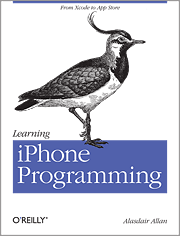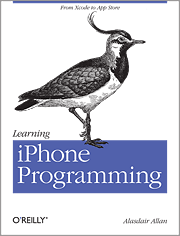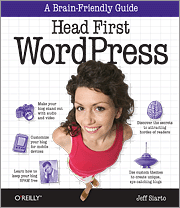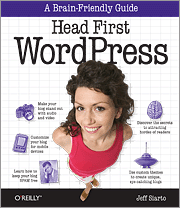Learning iPhone Programming, by Alasdair Allan: a definitive book to learn native iPhone programming. Recommended for those who understand Apple, C, OOP, and wish to create high-performance full-featured applications for iPhone.
 I’m an old-school coder and I would not claim myself mastering a platform before writing my own application in that platform. But there are different approaches to write our code in iPhone. The easy (and old) way is using web application with HTML-CSS-JavaScript suite. But to make the apps integrated with iPhone’s feature (camera, GPS, compass, accelerometer), we have to choose the native code: with Cocoa and Objective C. This Learning iPhone Programming book, published by O’Reilly, is a definitive book that guide us in designing such apps.
I’m an old-school coder and I would not claim myself mastering a platform before writing my own application in that platform. But there are different approaches to write our code in iPhone. The easy (and old) way is using web application with HTML-CSS-JavaScript suite. But to make the apps integrated with iPhone’s feature (camera, GPS, compass, accelerometer), we have to choose the native code: with Cocoa and Objective C. This Learning iPhone Programming book, published by O’Reilly, is a definitive book that guide us in designing such apps.
This book explores in detail the steps to take in design real iPhone apps. First it guides us to enroll in the iPhone Developer Program, to make sure our codes will be approved to run on a real device (instead of a simulator). The development environment (the Xcode) and iPhone SDK must be installed. Then, while preparing and designing our first iPhone app, we would learn the terms and tools in iPhone apps designing.

The following chapters will dig deeper in Objective-C language, design aspects, and essential features to be mastered; including network connection, data handling, sensor, geolocation and mapping, and the integration of the applications. We would also learn the distribution of our application in Appstore. The last chapter mentions the other aspects to learn further to enrich our app.
I consider this is one of the best books available to guide us designing a full featured iPhone app. I found it easy to learn (partially because I knew a bit about C, OOP, and Xcode — but you don’t really need to master them to start learning this book). I like how fast we can learn iPhone programming, guided by this compact book.








